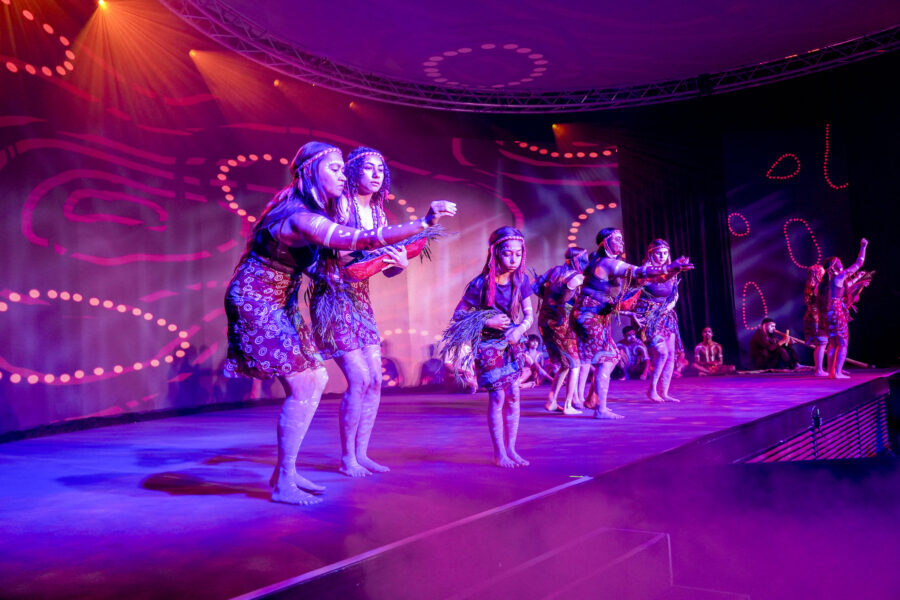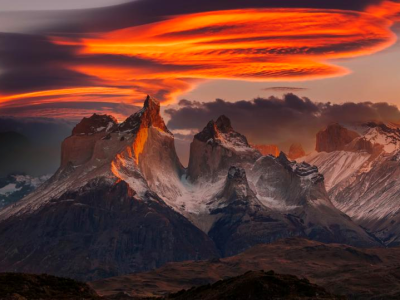Indigenous tourism is projected to contribute US$67 billion ($AU100 billion) to the global economy by 2034, a landmark World Travel & Tourism Council has found.
This economic boom is fuelled by increasing demand for authentic cultural experiences, in countries such as Australia, Canada and the United States, among others.
The report showcases the sector’s role in driving economic growth, particularly in remote regions, and its vital contribution for cultural preservation and community empowerment.
Indigenous tourism is rapidly emerging as a key economic driver. It creates jobs and economic value in remote areas. It promotes and protects Indigenous people’s cultures, languages and lands. And gives visitors a unique opportunity to experience and learn about Indigenous history and tradition.
With the global Indigenous tourism market set to grow at a CAGR of 4.1 per cent over the next decade to reach $67 billion, this sector is empowering communities to take control of their economic futures.
In Australia, more than 1.4 million international visitors engaged in Indigenous tourism experiences in 2019, marking a 6 per cent year-on-year growth since 2010.
“Indigenous tourism is not only about showcasing rich cultural traditions; it’s about empowering communities, creating sustainable jobs, and ensuring that Indigenous people are in control of their own stories and economic futures,” World Travel & Tourism Council president & CEO, Julia Simpson, said at the global tourism body’s 24th Global Summit in Perth (Boorloo).
“This report demonstrates the immense potential of Indigenous tourism to drive economic growth, particularly in remote regions, while preserving invaluable cultural heritage. As global demand for authentic experiences continues to rise, it is crucial that we support Indigenous businesses and ensure they have access to the resources and funding needed to thrive.”
In Canada, the Indigenous tourism sector supports nearly 2,000 businesses, and over 39,000 jobs, contributing CA$1.7 billion to the economy in 2017.
Similarly, in Panama’s Guna Yala region, tourism is the primary economic driver, sustaining the Guna people and their culture while creating a self-sufficient economy.

Female Noongar performers at the World Travel & Tourism Council Global Summit in Perth.
Preserving Culture Through Tourism
The report, Supporting Global Indigenous Tourism, shows how Indigenous tourism also plays a crucial role in preserving cultural heritage, languages, and traditional practices.
The Sámi people of Northern Europe, for example, have developed certification marks such as “Sámi Duodji” to protect their rich traditions, while Peru’s innovative Kipi robot helps preserve endangered languages like Kukama, spoken by just 2,000 people.
By incorporating these elements such as these into tourism, Indigenous communities can safeguard their cultural identities.
Sustainable career paths and inclusivity
Indigenous tourism is also a sustainable career path, exemplified by Canada’s Indigenous Tourism Association of Canada (ITAC), which empowers communities to control of their futures through tourism.
Meanwhile, countries like Australia and the U.S. are increasingly incorporating Indigenous experiences into national tourism marketing, ensuring authentic representation.
Access to Funding and Growth
Despite the growth of Indigenous tourism, many operators face challenges in securing funding, but efforts such as Canada’s Indigenous Tourism Destination Fund (ITDF) aims to raise CA$2.6 billion by 2030, to create 800 new Indigenous businesses and over 21,000 new jobs.
These funds are critical to ensuring Indigenous communities benefit fully from the booming tourism industry and can continue to grow sustainably.
WTTC is committed to lending its voice to this important conversation and support the efforts of Indigenous peoples worldwide in shaping their own tourism narratives and ensuring Indigenous tourism remains a thriving, self-sustaining industry that benefits everyone.
 Noongar performers at the World Travel & Tourism Council Global Summit in Perth.
Noongar performers at the World Travel & Tourism Council Global Summit in Perth.









